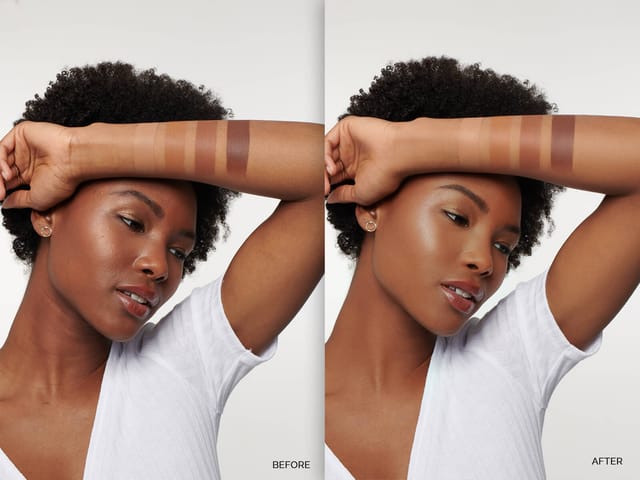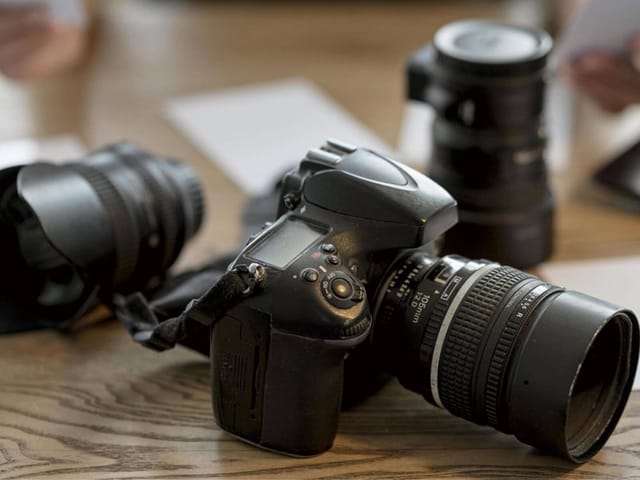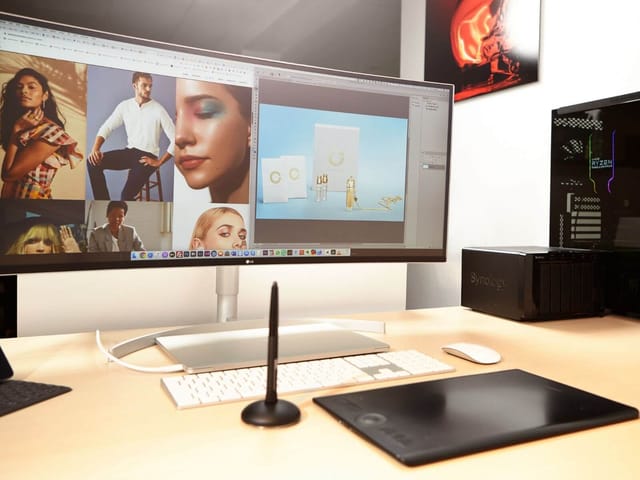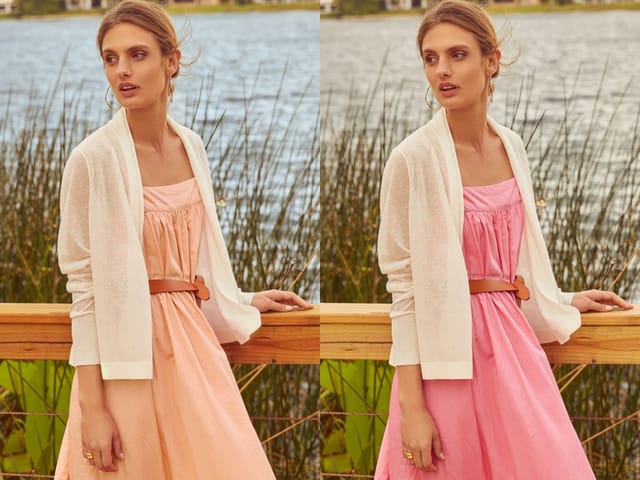
White balance is a crucial aspect of photography (and video) that amateur photographers often overlook during photo shooting and retouching. White balance refers to the process of adjusting the color temperature of a photograph to reflect the true colors of the scene accurately.
If you have ever taken a photo or video that looked unnatural, with too much blue or yellow, then the incorrect white balance setting was the issue. So, it's essential to get the white balance right to ensure that the colors in your photos are true to life and your images look their best. But, if you don’t get it right from the start, don’t panic because there are various image editing techniques that you can use to correct it. This article will discuss the importance of white balance in photography and how to achieve proper white balance in your photos.

What is white balance?
White balance is the process of adjusting the color temperature of a photo to match the lighting conditions in which the photo was taken. Different lighting conditions produce different color casts, which can affect the overall color balance of a photograph.
The setting of white balance on a camera determines the accurate representation of the color white. This provides a reference point for measuring all other colors. Since the color white may not appear valid to its nature in various lighting scenarios, the setting of white balance helps rectify the issue. The camera may automatically identify the correct white balance; it can also be selected from a range of presets or set manually by the user.
For example, if you take a photo in a room lit by incandescent light bulbs, the image will have a yellowish-orange cast. On the other hand, if you take a picture outside on a sunny day, the picture will have a bluish cast. Adjusting the white balance will correct these color casts and produce a photo that accurately reflects the true colors of the scene.
Why is white balance important?
Proper white balance is essential for producing images accurately reflecting the scene's true colors. Photos can look dull, washed out, overly warm, or cool without appropriate white balance. Accurate color representation is significant for certain types of photography, such as product photography, where the colors of the product must be accurately represented. If you get it right from the camera, you will also reduce the time for image retouching and image editing.
White balance is also essential for creating a consistent photo look and feel. It helps create cohesive images, particularly in commercial photography and branding. Consistency in color representation can also help establish a recognizable style for a photographer, which can be important for building a brand and attracting clients.
The need for adjusting the white balance is due to the hue of the light falling on the object, which is commonly known as color temperature. Whether you are photo shooting outdoors with natural light or indoors using artificial lighting, light can be of various strengths, shades, and temperatures, which should always be adjusted accordingly from the camera or during image retouching.
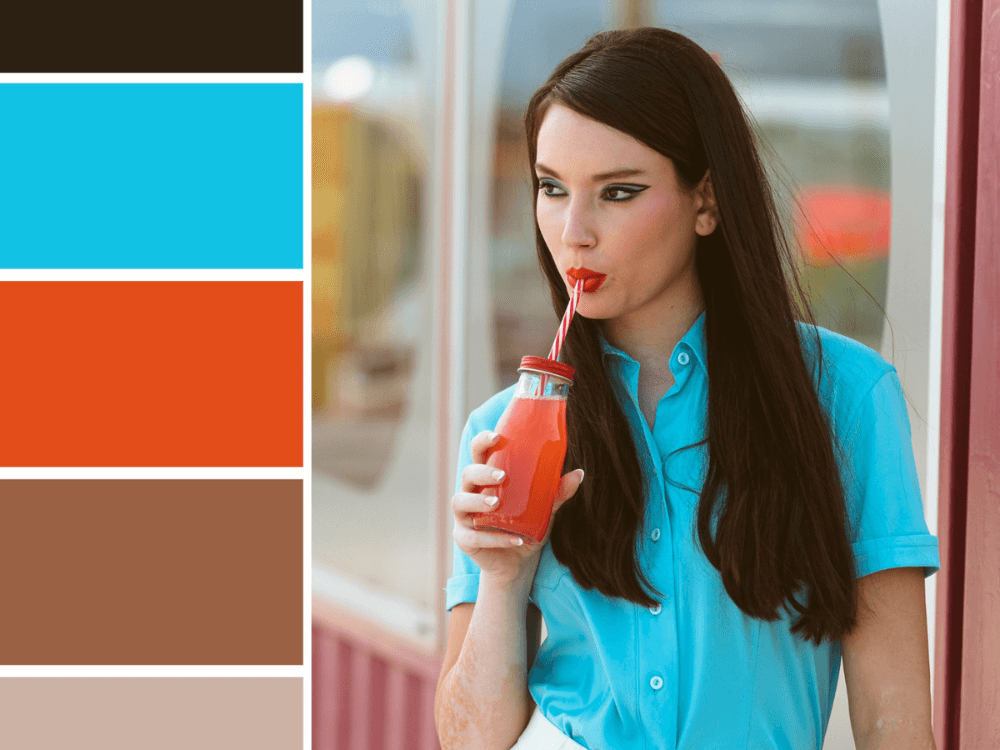
How to achieve proper white balance
There are several methods for achieving proper white balance in your photos. One of the simplest methods is to use the white balance presets on your camera. These presets to match the most common lighting conditions. Modern digital cameras have a standard range of presets to white-balance the image under specific lighting conditions. For instance, a typical DSLR camera may have presets for sunny weather, cloudy weather, fluorescent light, tungsten light, etc. By selecting the appropriate white balance preset, you can quickly and easily adjust the color temperature of your photos.
Also, most digital cameras have an auto balance setting as their default mode. This setting is essentially a guess of what the "true white" is, based on the color temperature of the light upon the subject. Although auto balance can sometimes produce accurate results, manual calibration often has better results.
When it comes to manual adjustment of white balance, there are two available options. The first option is manually selecting a Kelvin temperature number. The lower the Kelvin number, the cooler the image; the higher the Kelvin number - you guessed it, the warmer the image. This technique gives you much flexibility to find the color temperature that looks the best for your product photography.

Another method is to use a gray card or white balance target. A gray card is a neutral gray card that reflects 18% of light and is used to calibrate the camera's exposure and white balance settings. Use a gray card, place it in the scene, and take a photo of it. Then, use the gray card photo as a reference to adjust the white balance during image retouching.
Finally, you can adjust the white balance during the image editing using photo retouching software such as Lightroom or Photoshop. In these programs, you can adjust the temperature and tint sliders to achieve the desired white balance. You can also use the eyedropper tool to select a neutral area in the photo and adjust the white balance based on that area.
The Impact of white balance on different types of Photography
White balance is an essential element of all types of photography, whether you're taking photos of landscapes, portraits, or still life. However, the impact of white balance on the final image can differ depending on the type of photography you are working with.
For example, when taking portraits, achieving accurate skin tones is vital, and an incorrect white balance can result in skin tones that look too yellow, red, or blue. This can make your subjects look sick or unnatural.
When taking landscape photos, the impact of white balance is less pronounced. As a result, you have more flexibility to experiment with different white balance settings and can create warmer or cooler images depending on your artistic vision. Still, achieving accurate white balance is essential to ensure that the colors of the sky, trees, and other natural elements are true to life.
In addition to achieving proper white balance, removing the background is another important aspect of the product photography that can help make your images stand out. Read more about eliminating experience on our blog.
The importance of white balance in video production
White balance is just as crucial in video production as in photography, perhaps even more so. In video production, white balance affects the overall tone and mood of the video and can be used to create different effects or moods.
A warm white balance can create a nostalgic, retro feel, while a cool white balance can create a futuristic, high-tech atmosphere. Accurate white balance is critical in video production because, unlike photos, video footage is continuous, and any inconsistencies in color temperature are more noticeable.
Proper white balance is also essential in video production, ensuring consistency between different shots. A video shot with an inconsistent white balance can be jarring to the viewer, as the color temperature can change dramatically from one shot to the next.
Conclusion
White balance is a crucial aspect of photography and video production that should not be overlooked. Achieving proper white balance is essential for producing images that accurately reflect the true colors of the scene, creating a consistent look and feel, and establishing a recognizable style. Several methods for achieving proper white balance including using camera presets, manual adjustment, gray cards or white balance targets, and adjusting white balance during image editing and image retouching. Different types of photography and video production have different needs regarding white balance, but accurate white balance is always essential for producing high-quality, professional-looking images and videos.

